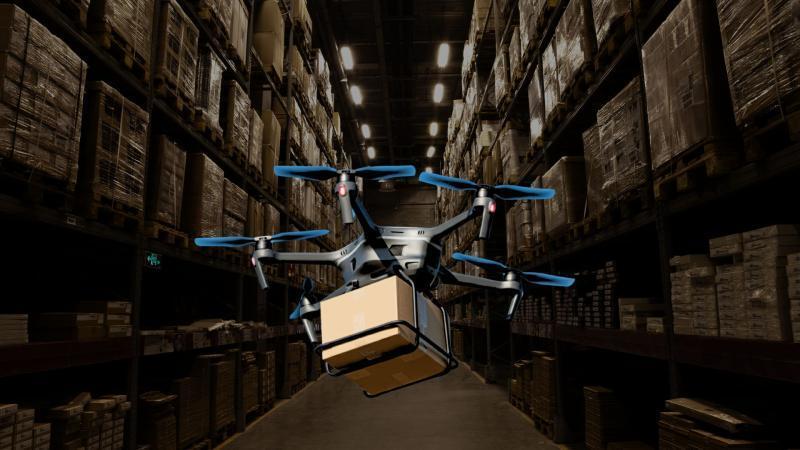
New Tech Optimises Drone Fleets for Faster, Greener Deliveries
The rise of drone technology has revolutionized the logistics industry, offering a faster and more efficient way to deliver packages. However, one of the biggest challenges facing drone operators is the “Drone Warehouse Problem”. This refers to the difficulty of managing a fleet of drones, ensuring that each one is used optimally to minimize delivery times and reduce environmental impact. Now, researchers have developed a novel algorithm that tackles this problem head-on, paving the way for faster, greener deliveries.
The Drone Warehouse Problem is a crucial logistics challenge that has hindered the widespread adoption of drone delivery technology. With the increasing demand for same-day and next-day delivery, drone operators need to be able to manage their fleets efficiently to meet this demand. However, traditional scheduling algorithms are not designed to handle the unique constraints of drone delivery, such as weather conditions, battery life, and traffic.
The new algorithm, developed by researchers at a leading tech institution, addresses this challenge by optimizing drone delivery schedules. The algorithm takes into account a range of factors, including the location of drones, the destination of packages, and the weather conditions. This allows warehouses to efficiently manage their varied drone fleets, ensuring that parcels reach customers quickly and efficiently.
The benefits of this new technology are numerous. Firstly, it allows for faster delivery times, which is a major differentiator for e-commerce companies looking to stay ahead of the competition. With the ability to schedule drone deliveries more efficiently, companies can reduce delivery times and improve customer satisfaction.
Secondly, the algorithm enables greener deliveries, which is a major concern for environmentally conscious consumers. Traditional delivery methods, such as trucks and vans, are major contributors to greenhouse gas emissions. Drones, on the other hand, can fly directly to their destinations, reducing the need for fuel-guzzling vehicles.
Finally, the algorithm can help reduce costs for drone operators. By optimizing drone delivery schedules, operators can reduce the number of flights required, which can help reduce fuel consumption and lower operating costs.
The algorithm is the result of a collaboration between researchers and industry experts. The team developed a novel approach to scheduling, using a combination of machine learning and optimization techniques. The algorithm is designed to be flexible and adaptable, allowing it to be used in a variety of different scenarios.
To test the algorithm, the researchers conducted a series of simulations using real-world data. The results were impressive, with the algorithm able to reduce delivery times by up to 30% compared to traditional scheduling methods. The algorithm also showed significant reductions in greenhouse gas emissions, with some simulations showing emissions reductions of up to 50%.
The potential applications of this technology are vast. It could be used by e-commerce companies to improve their delivery times and reduce their environmental impact. It could also be used by logistics companies to optimize their drone delivery operations and reduce costs.
In conclusion, the development of this new algorithm is a significant breakthrough in the field of drone technology. It has the potential to revolutionize the way we think about delivery logistics, offering faster, greener, and more efficient ways to get our packages to our doorsteps.
News Source:
https://researchmatters.in/news/novel-algorithm-tackles-drone-warehouse-problem-faster-deliveries






